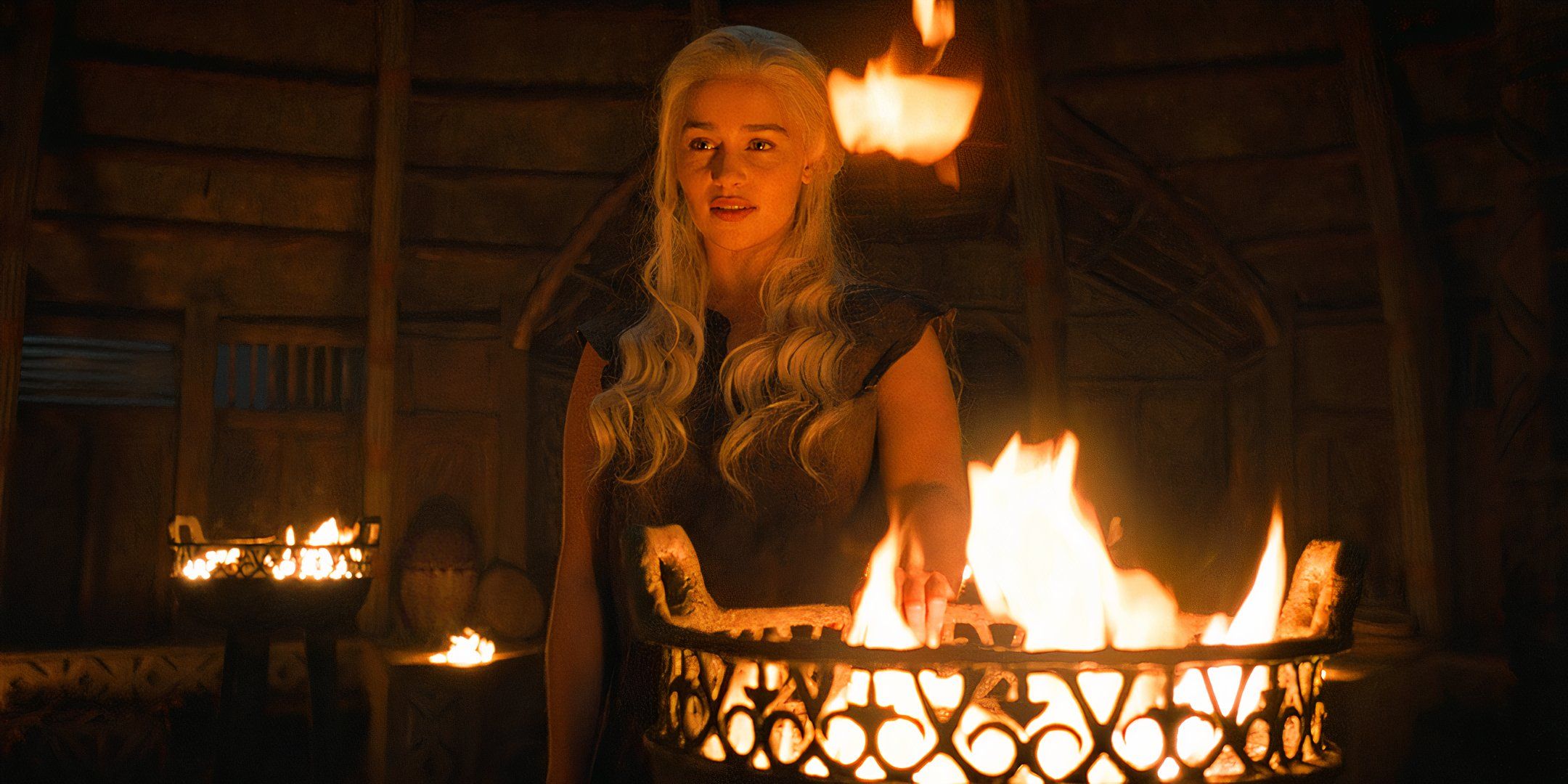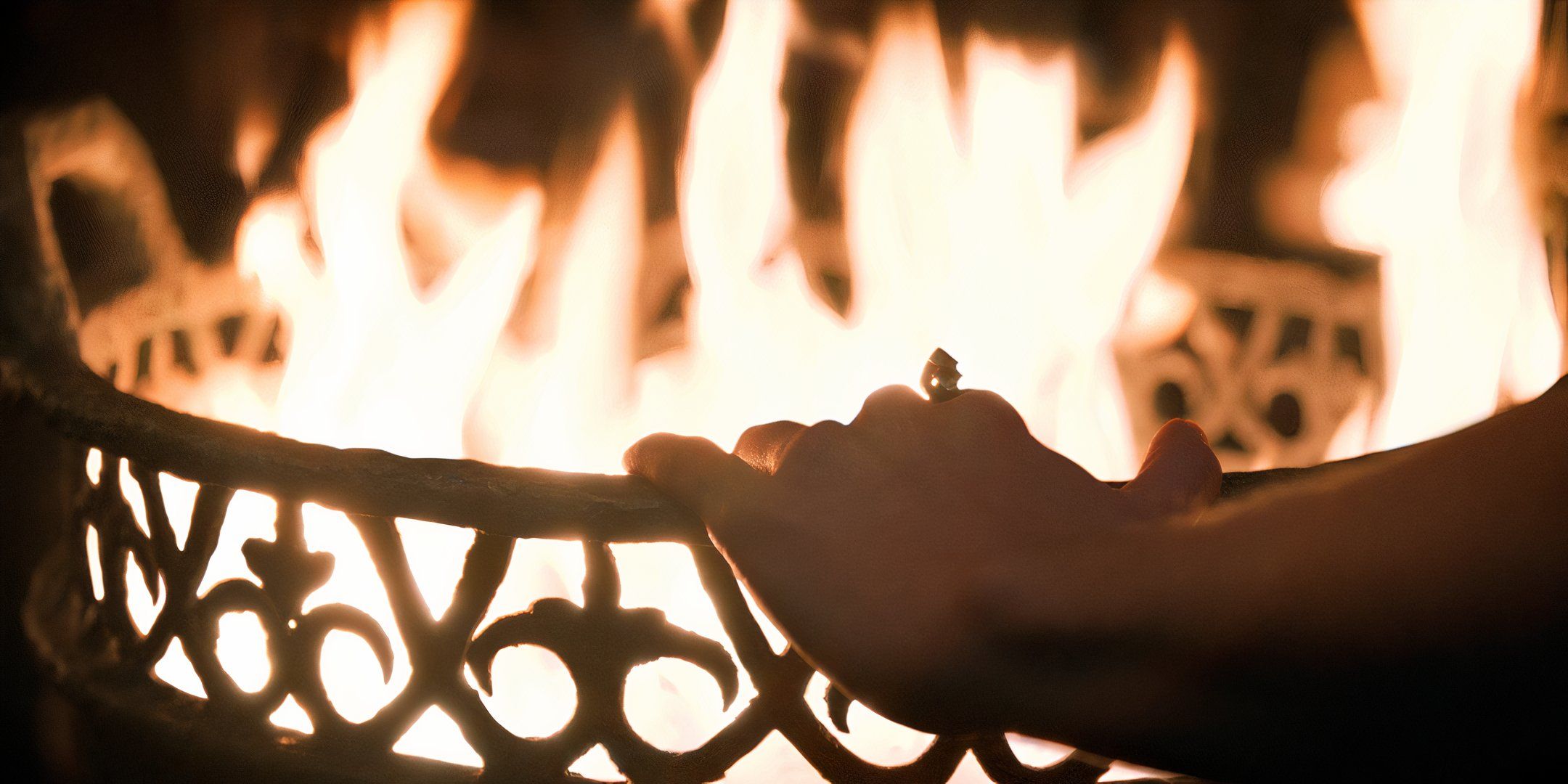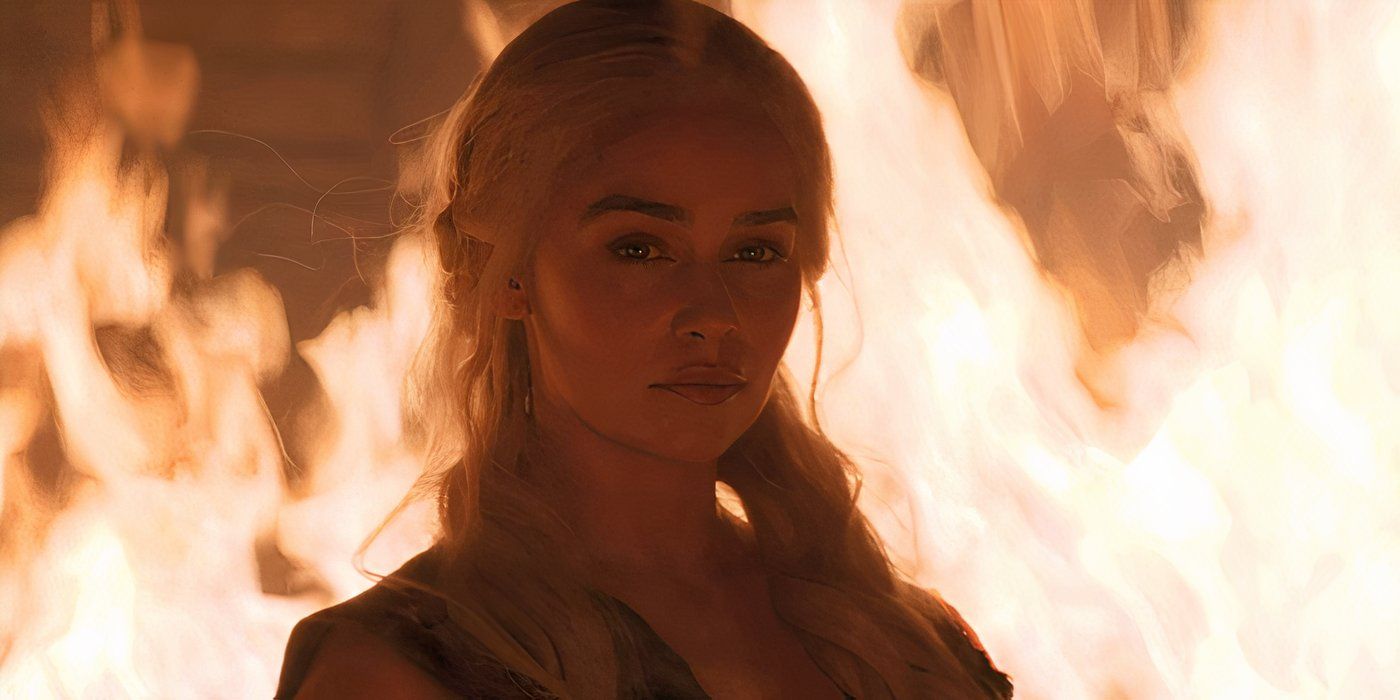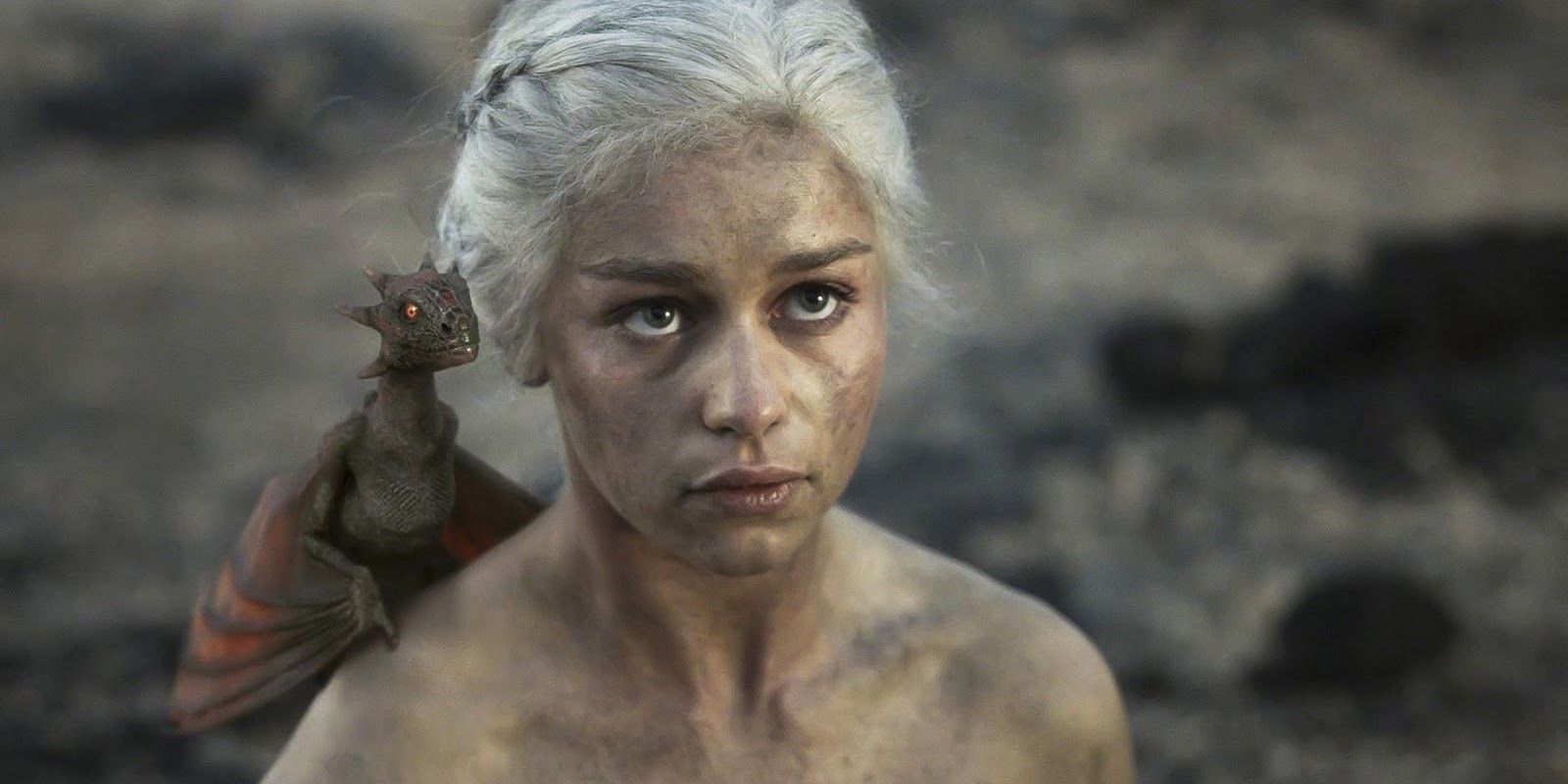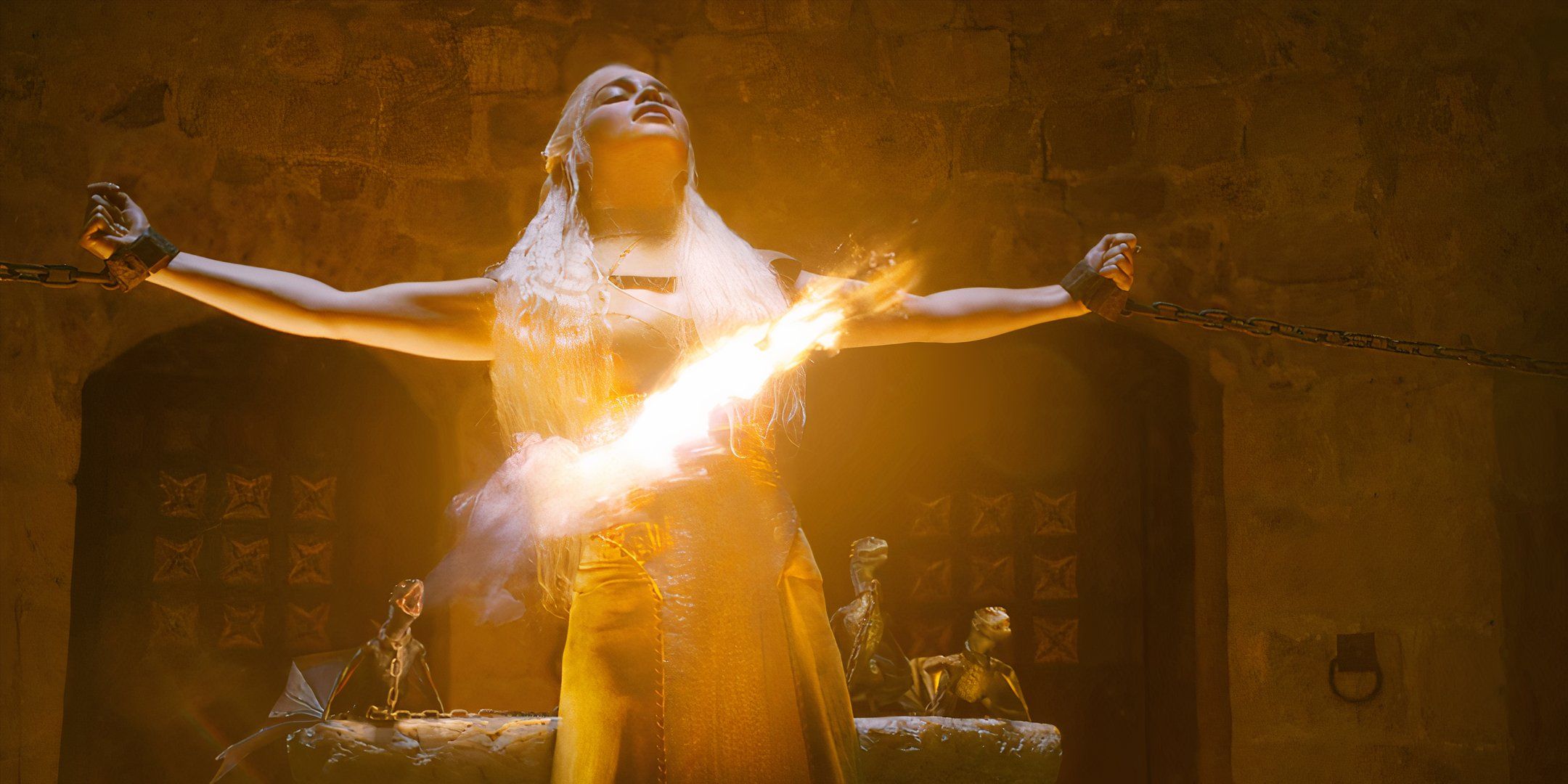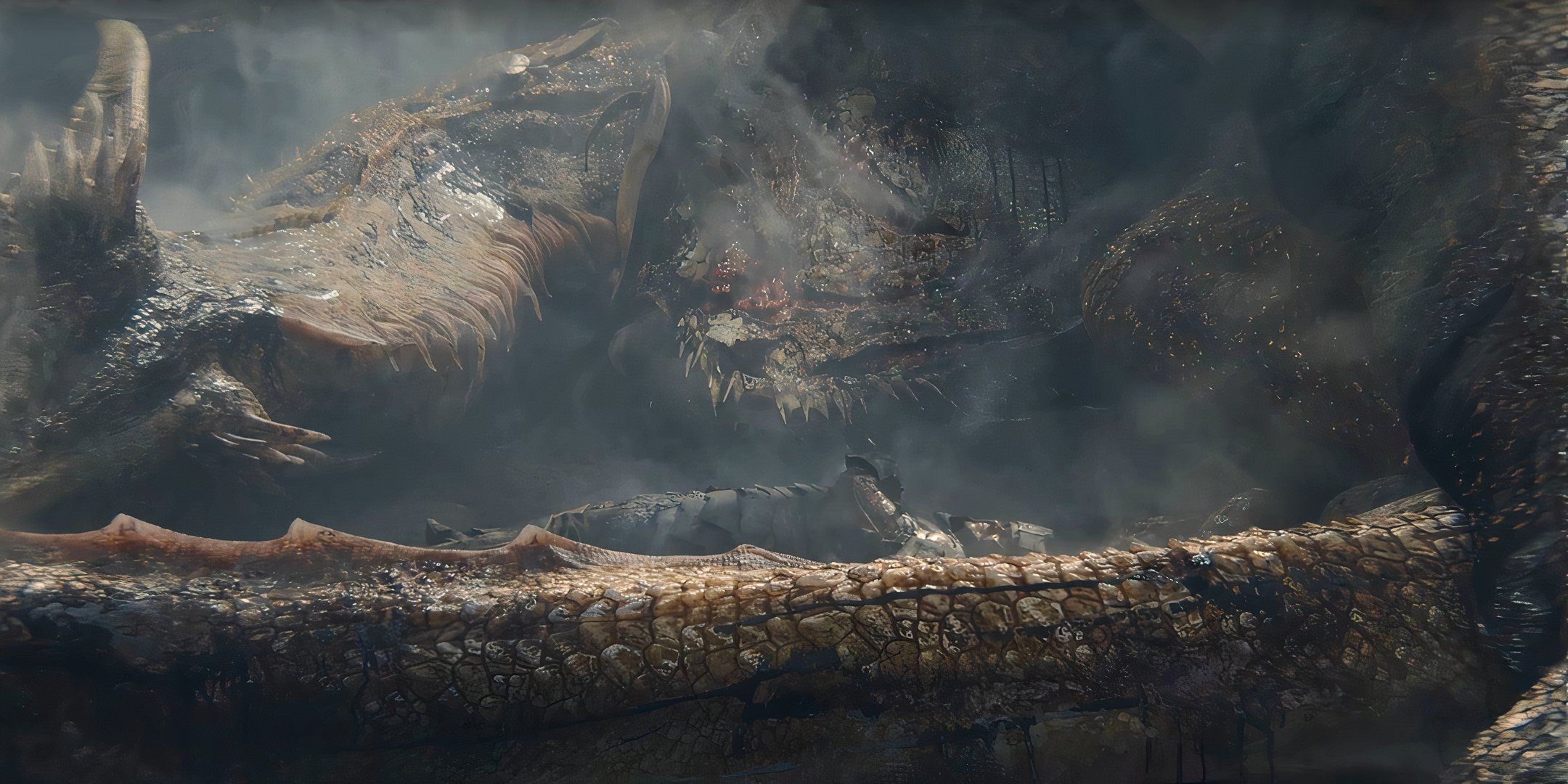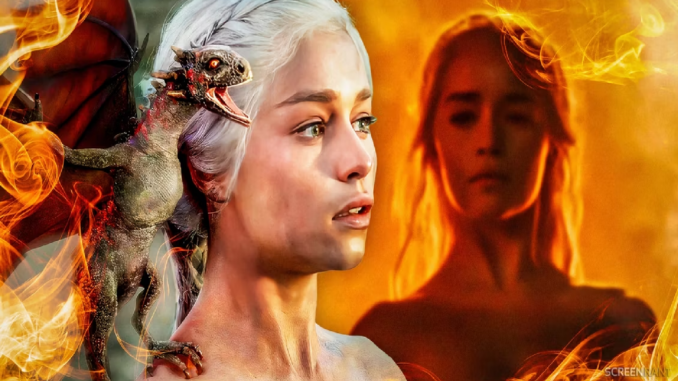
“The Unburnt” is one of many titles Daenerys Targaryen has throughout Game of Thrones (and George R.R. Martin’s A Song of Ice and Fire books, too). However, unlike, say, Khaleesi or Breaker of Chains, this is not a symbol of political power or action, but a more supernatural or magical ability: being fireproof. Daenerys emerged from Khal Drogo’s funeral pyre with three baby dragons in Game of Thrones season 1, episode 1, “Fire and Blood,” and was, somehow, unscathed.
This feat was repeated on a couple of occasions throughout Game of Thrones’ timeline. In season 2, episode 10, “Valar Morghulis,” Daenerys stands in the House of the Undying, surrounded by dragonfire. In season 6, episode 4, “Book of the Stranger,” it’s even more overt, as she burns the khals and stands inside a building on fire, again emerging without a mark. It helps make Daenerys one of Game of Thrones’ most powerful characters, but the show doesn’t explain the actual cause of it, and does make a change from the books in the process.
Daenerys Being Immune To Fire In Game Of Thrones Explained
The Ability Is Seemingly Linked To Bloodmagic & Her Dragons
Game of Thrones didn’t explain how Daenerys became immune to fire, nor, crucially, did it explain when it happened. The latter is particularly important for addressing the former, as there are clues and significant moments that would help explain it. If Daenerys only truly became immune to fire (rather than having an unusually high tolerance for heat) with the events surrounding Khal Drogo’s funeral pyre, then the magic contained within would be a clear means of giving her fire immunity.
The pyre involved two kinds of magic that would be quite fitting for giving a Targaryen powers: fire and blood.
The pyre involved two kinds of magic that would be quite fitting for giving a Targaryen powers: fire and blood. This is what all magic in Old Valyria stemmed from – quite possibly being involved in things like Valyrian steel and even the creation of dragons themselves – and so it makes sense for them to be present here.
The bloodmagic comes with the ritualistic sacrifice Dany makes of Mirri Maz Duur (a practitioner of bloodmagic herself), alongside her horse and, of course, Drogo’s own body (which, as a khal, could technically count as king’s blood). Then there is the raging pyre itself, combining with the other magic to not only wake dragons from stone, but, perhaps, give Daenerys immunity to fire.
There are things working against this notion, however: namely, those instances where Dany seemed impervious to feeling heat. Her holding the dragon egg from the brazier, or stepping into a scalding hot bath as if it were just lukewarm, suggests she could have been immune to fire before then (though Targaryens are more heat-resistant). If that’s the case, then it would be an even more supernatural ability; a divine, ostensibly unique gift that she was born with.
…It adds to her mythic status, power, and thus her own self-belief in her destiny.
Of course, there are simpler reasons when stepping out from the narrative. For one, it’s a lot easier for Game of Thrones to just have Daenerys be fireproof, rather than explain why she isn’t later on. And two, it adds to her mythic status, power, and thus her own self-belief in her destiny.
Daenerys controls her three dragons differently to other Targaryens, with a seemingly greater bond and an ability to somewhat dictate the riderless Rhaegal and Viserion, not just Drogon. That’s because she’s the Mother of Dragons and speaks to the situation of their hatching with her on the pyre, but that itself could also come from the same magic that made her fireproof, and the two things may be linked.
Daenerys Targaryen Is Not Fireproof In A Song Of Ice & Fire
George R.R. Martin Has Made It Clear This Is Not The Case
In the A Song of Ice and Fire books, Daenerys emerges from Khal Drogo’s funeral pyre in much the same way she does in the show. That is, relatively unscathed and carrying three baby dragons, leading to the sobriquet “the Unburnt.” However, Dany technically is burned in the novel: her hair is scorched off by the flames, leaving her bald. Obviously, Game of Thrones didn’t want a bald Emilia Clarke, and so skipped over this part, further enhancing her fireproof abilities.
Other scenes, such as her holding the scorching hot dragon egg, aren’t in the book either. Dany might be able to tolerate heat more than your average Westerosi, but Martin has said multiple times over the years she is not supposed to be immune to fire, even as far back on a web chat on EventHorizon.com back in 1999:
Granny: Do Targaryens become immune to fire once they “bond” to their dragons?
George_RR_Martin: Granny, thanks for asking that. It gives me a chance to clear up a common misconception. TARGARYENS ARE NOT IMMUNE TO FIRE! The birth of Dany’s dragons was unique , magical, wonderous, a miracle. She is called The Unburnt because she walked into the flames and lived. But her brother sure as hell wasn’t immune to that molten gold.
Revanshe: So she won’t be able to do it again?
George_RR_Martin: Probably not.
Obviously, time may have changed things, and the books could eventually decide to have Dany be fireproof, but it seems unlikely and would go against the current evidence. In A Dance with Dragons, Daenerys is in the fighting pit with Drogon, and does feel the heat of his flames. Later, when inspecting her wounds, she thinks:
“Her skin was pink and tender, and a pale milky fluid was leaking from her cracked palms, but her burns were healing.”
Since Daenerys ends that book with Drogon, then she may not have the same encounter with the Khals she did in Game of Thrones anyway when The Winds of Winter releases. Regardless, given what Martin has not only said, but repeatedly shown with other Targaryens too, it would be a big surprise if he followed the TV series in this regard (outside another magical ritual). Book Daenerys is many things and will become many more, but fireproof probably won’t be one of them.
Daenerys Being Fireproof Goes Against Game Of Thrones’ Approach To Fantasy
Game Of Thrones Usually Toned Down The Magical Elements
Generally speaking, Game of Thrones toned down the already low-magic world of A Song of Ice and Fire. It was a fantasy show but, for something with the elevator pitch of “The Sopranos meets Lord of the Rings,” the showrunners were typically more interested in the former of those two properties, focusing on the family drama, the machinations, betrayals, and so on.
Other elements of fantasy and magic, such as the direwolves… were either significantly downplayed or omitted altogether.
There was clearly a love for the dragons, to be sure, but more from the standpoint of delivering an epic spectacle than anything else. Other elements of fantasy and magic, such as the direwolves, most of the Starks being wargs, mysterious characters like Coldhands, and objects such as glass candles and the Horn of Winter, were either significantly downplayed or omitted altogether. Which makes the decision to have Daenerys be fireproof all the more interesting.
This is a rare example of Game of Thrones taking a magical element from A Song of Ice and Fire and turning it up to 11, rather than dialing it down. But, again, I think the reason for that is not because of being interested in the magic/fantasy of it all, but rather the simple plot convenience, the added spectacle for scenes such as burning the Khals, and the impressive power it lends Daenerys as a character.
House Of The Dragon Proves Other Targaryens Aren’t Immune To Fire
Westeros History Also Makes This Very Clear
Game of Thrones itself suggests other Targaryens aren’t fireproof: Jon Snow burns his hand when saving Jeor Mormont from a wight, and Viserys Targaryen is killed by having molten gold poured over his head. But if that’s not enough – since Jon is only half-Targaryen and Viserys’ death wasn’t literally fire – there are other examples from elsewhere that prove Targaryens are not immune to fire. House of the Dragon, for instance, directly shows this on-screen:
- Aemma Arryn’s body is burned on a funeral pyre.
- Laena Velaryon is killed by Vhagar’s dragonfire.
- Aegon II Targaryen is severely burned and wounded by Vhagar’s fire as well, at the behest of Aemond Targaryen.
Again, they are all half-Targaryens rather than direct products of Targaryen incest (though Laena is pure Valyrian), but the pattern is pretty clear: Targaryens aren’t fireproof, and we aren’t supposed to think they are.
Martin himself has been pretty clear about this in terms of Westeros history. Another major example is the Tragedy at Summerhall, a disaster for House Targaryen that killed several members at their summer house. What caused the inferno isn’t fully known, but it’s believed to have involved pyromancers, wildfire, and an attempt to hatch dragon eggs. Similar circumstances to Daenerys, then, and yet both King Aegon V Targaryen and his son, Duncan, were killed. There’s also the case of Aerion Targaryen, who died from drinking wildfire.
Time and time again, whether in the books or the shows, it’s been made clear Targaryens are not fireproof, and what happened with Daenerys was, in Game of Thrones, a magical case (whether from her own birth or the birth of her dragons), and a complete one-off in A Song of Ice and Fire.
